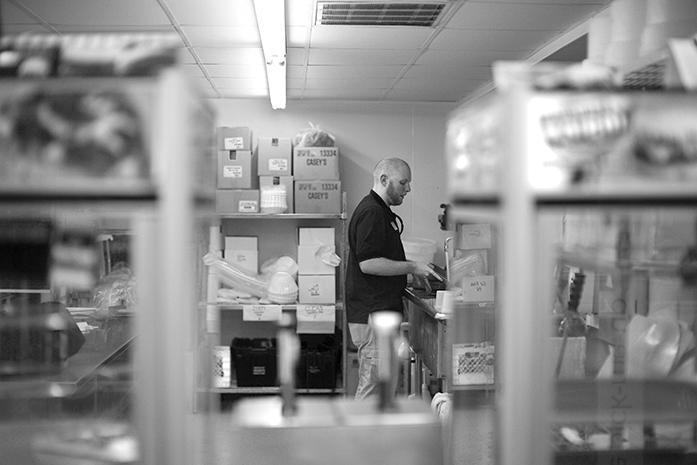By Isabella Rosario
When people think of minimum-wage workers, they often imagine teenager, living with their parents, working to earn extra spending money. But according to the Economic Policy Institute, 88 percent of U.S. minimum-wage workers are not teens — they’re 20 or older, and 36 percent of them are 40 or older.
In today’s America, the minimum-wage worker cliché of a high-schooler flipping Big Macs on the weekends has turned into the 35-year-old single mother struggling to put food on the table. Working full-time at $7.25 an hour barely scratches the surface of maintaining a basic standard of living — but that doesn’t seem to matter much to certain Iowa lawmakers.
Last month, House Republicans began pushing for a bill that would enforce a statewide $7.25 minimum wage, revoking local governments’ ability to set their own minimum wages. If signed into law, HSB92 would rescind minimum wage increases approved in Johnson, Linn, and Wapello Counties, as well as cancel Polk County’s scheduled increase. The House Local Government Committee held a public hearing on the bill on Monday, filled with disappointed Iowa workers and approving business owners alike.
The fact is, an American full-time worker making $7.25 an hour is guaranteed to live barely above the poverty line for one person of $12,060, according to the U.S. Department of Health and Human Services Poverty Guidelines for 2017. In a country that prides itself so greatly in the “American Dream,” the idea that you can achieve anything through hard work, such a dismal minimum wage is a point of disgusting irony. Minimum wage is more than just the lowest legal hourly pay. Established by the Fair Labor Standards Act of 1938, it is a fundamental labor standard designed to protect workers from exploitation due to the inherent power imbalance between employers and low-income workers. Twenty-nine states have recognized this and raised their minimum wages above the federal $7.25 an hour; Iowa’s has remained at $7.25 since 2008. So how high should it be? There’s no perfect answer, but purchasing power, wage growth, and productivity growth indicate that $7.25 is dangerously low, and if enforced as a statewide standard, would be a serious step back for low-income workers in counties where the minimum wage has been increased.
There’s a widespread fear among politicians and business owners alike that increasing the minimum wage would kill jobs. However, studies conducted by economists over the last few years have told a different story. According to a 2010 study conducted at UC-Berkeley, increasing the minimum wage had “no adverse employment effects” across state borders. And a 2013 report by the Center for Economic and Policy Research found that “the minimum wage has little or no discernible effect on the employment prospects of low-wage workers.” Finally, economists in a 2015 report from the research institute Integrity Florida cited several reasons increasing the minimum wage generally does not cost jobs: increased pay encourages greater spending, creates higher demand, and, in turn, hires more workers. Additionally, a higher wage “may make it easier to attract applicants and results in less turnover of workers, lowering costs of employers.”
The bottom line is, we need people doing these jobs. They deserve to work in this country with dignity. And research shows doing the human thing and providing them with that does not significantly hurt jobs — in fact, it creates more jobs, more business, and more spending. The question lawmakers at the state and federal levels should ask is not whether workers deserve to make more than $7.25 an hour, but why, with economists’ findings, they should be forced to live on so little in the first place.



